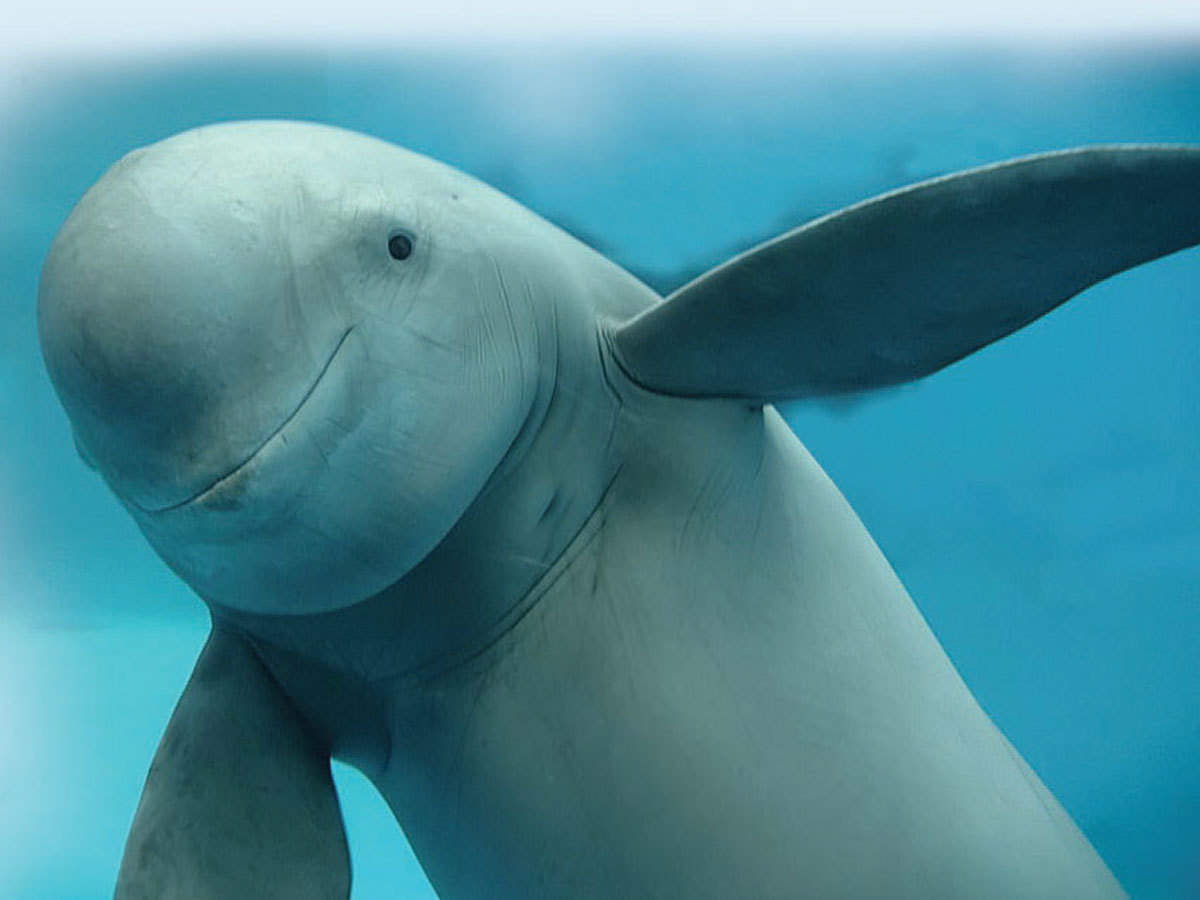THE SMILING DOLPHINS are back! This critically endangered marine mammal is breeding in China’s legendary Yangtze river, new studies say.
Scientists are cautiously optimistic that the tiny group of finless porpoises (江豚), has grown slightly, reversing a decades-long shrinkage in its numbers.

From an already tiny number of just 2,500 in 1991, numbers dropped to just 1,000 in recent years. However, a study conducted by the Ministry of Agricultural and Rural Affairs this year shows a rise to about 1,200 – the first increase in the past three decades.
Some 490 have been observed in Jiangxi’s Poyang Lake (鄱陽湖) and 160 dolphins in Hunan’s Dongting Lake (洞庭湖). Both are giant freshwater lakes in China.
NO BACK FIN OR BEAK
The creatures differ from other dolphins. They have no raised fin on their backs, and are entirely missing the pointed beak that other dolphins have. This gives them a flat face which seems to be grinning.
It is known in Chinese as a “river piglet” and sometimes depicted as “a smiling angel”.

The Yangtze River is the world’s third longest river stretching from the Tibetan Plateau to the estuary of the East China Sea and it has high levels of biodiversity. There are more than 4,300 species of marine creatures along the river’s waterways and tributaries.

In the past few decades, overfishing and other human activities caused a drastic reduction in the number of the dolphins in the stretch of the river. Another dolphin, the Baijiu, may be entirely extinct.
PROTECTION EFFORTS
In recent years, Mainland authorities have stepped up the protection of the finless porpoises, as they earlier launched a 10-year fishing ban policy to boost aquatic biodiversity in the Yangtze River. The authorities have also fostered an artificial breeding program to raise more endangered dolphins.

DESTRUCTION OF DOLPHINS’ HABITANTS
Amid over-fishing and use of destructive fishing gear like gillnets, dolphins have been vulnerable to human-induced pressures. Overfishing has led to the decrease in food supplies for the dolphins.
Also, heavy maritime traffic and sand mining along the Yangtze River have led to decline of dolphin population. Increased vessel traffic can lead to dolphin deaths from propeller strikes.
FISHING BAN PROTECTS YANGTZE RIVER
Since January 2021, the Central Government has implemented a 10-year fishing ban over conservation sites along the Yangtze River to help restore the river’s ecosystem and boost inhabitants for dolphins and other marine livings. The fishing moratorium was later expanded to cover all main stream tributaries and major lakes linked to the river.

Hubei’s Yichang city (宜昌市), which is rich in fish resources, used to be one of the areas hard-hit by illegal fishing. The ministry’s officials have stepped up the fight by deploying helicopters and drones to conduct regular inspections. Fishery administration vessels have patrolled the river’s major waterways to clear up abandoned fishing vessels and fishing nets.
FISHERMAN CHANGE PROFESSION
Surveillance cameras have been installed along the river’s waterways as part of a crackdown on illegal fishing and dumping of waste materials.
With the fishing moratorium, over 230,000 fishermen have headed ashore. Local authorities have helped fishermen move to residential resettlement areas and offered them financial compensation.
While some fishermen have decided to retire, others have used the compensation to start their own businesses, setting up companies to provide garbage recycling services for maritime vessels and establishment of small-scale restaurants along the Yangtze River.
BREEDING IN CAPTIVITY
Above all, the Ministry has worked with marine conservationists and experts from Chinese Academy of Science’s Institute of Hydrobiology (中國科學院水生物研究所) to help breed the dolphin species. The Wuhan-based institute has initiated an artificial breeding program to raise the number of the mammal species about a decade ago.

Hanbao (漢寶), a male finless porpoise born in captivity about three years ago, is the first second-generation porpoise that was born through the artificial breeding program.
There are several finless porpoise species which have been bred through such methods.

Hao Yujiang (郝玉江), an aquatic expert and senior researcher of the Institute of Hydrobiology, said the fishing ban has benefitted the enhancement of biodiversity in the Yangtze River and more porpoise raised in breeding program will go wild in the river in the near future.
Hao said they have regularly tracked those captive-bred dolphins which have been released in the Yangtze River and assessed whether the species can adapt to natural marine environment. He hopes that the fate of finless porpoise will not be same as another Chinese dolphin species, known as Baiji (白鱀豚) – which has not been spotted in the wild for a prolonged period of time.
There are signs of hope for population of finless porpoise, the only aquatic mammal left in the Yangtze River, to grow after years of problems with pollution, overfishing and heavy shipping traffic.
With mainland authorities stringent curbs’ on overfishing and launch of artificial reproduction projects as well as growing awareness on protection of the river’s biodiversity, the critically-endangered dolphin species may yet be saved from extinction.
Image at the top from Talia Cohen/Unsplash
